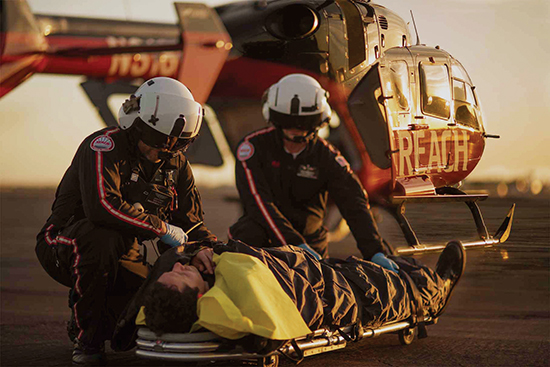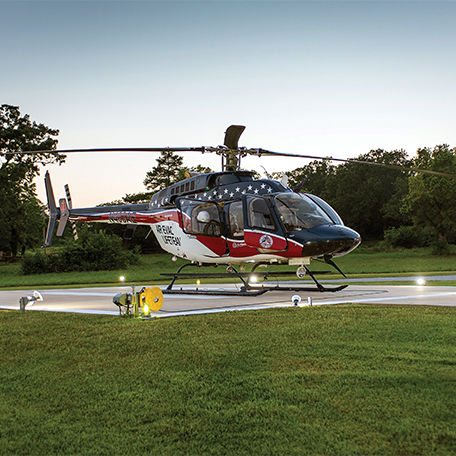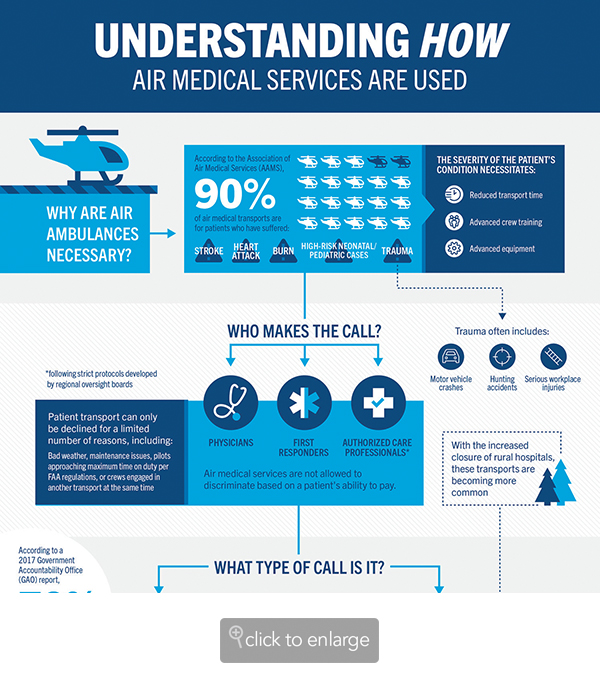Safety in the Sky
What to know about emergency air ambulance transportation
(Family Features) For many types of medical emergencies, time is a critical factor. The faster a patient receives critical care, the greater the chances for a positive outcome, including a full recovery. However, for people living in remote areas and those who enjoy spending leisure time off the beaten path, time and help aren’t always readily available.

Emergency air medical services can play a vital role in transporting patients who have experienced a medical episode such as a stroke, heart attack, burn- or trauma-related accident including motor vehicle accidents or workplace injuries. In these severe circumstances, patients can benefit from emergency air medical services’ significantly reduced transport times, specialized medical training and advanced equipment.
With the increased closure of rural hospitals, these transports can help patients receive the care they need. Understanding how emergency air medical services work can provide an advantage if a crisis requiring specialized transportation is experienced.
The Decision to Use an Emergency Air Ambulance
Emergency air ambulances are resources typically reserved for times when a patient is facing a life-, limb- or eyesight-threatening emergency and it is in the person’s best interest to receive expedited medical care. A qualified situation typically involves the risk of serious or permanent damage to a patient’s (or unborn child’s) health or bodily function.
If the medical situation meets any of these criteria and the 911 dispatcher determines the patient would benefit from emergency ground or air medical transport, he or she may proactively dispatch an air ambulance along with a ground ambulance. Similarly, when assessing a patient who is critically ill or injured, a first responder or other authorized care professional on the scene will determine the closest and fastest options for getting to advanced medical care. If the condition is particularly serious, air transportation may be the most viable option.
In other situations, physicians or authorized health care professionals operating under strict protocols may make the decision to request an emergency air transport. An example would be when a patient urgently needs a higher level of care and is transported from a community hospital to a larger, better equipped facility such as a trauma center. In fact, these types of interfacility transfers of some of the sickest or most gravely ill patients make up the majority of emergency air ambulance transports.
Payment Options and Insurance Denials
Emergency air medical service payments can vary a great deal. In severe situations, patients cannot be denied access to air transport based on ability to pay. In fact, under the Emergency Medical Treatment and Labor Act, air ambulances are required to deploy (barring severe weather, maintenance issues or actively transporting another patient) and agree to take flights without any knowledge of the patient’s ability to pay. Any type of insurance that may cover emergency air medical transport services, including health, auto, medical and liability, may be a source of payment. Additionally, for those covered through Medicare Part B, a co-pay and deductible may be all a patient is responsible for paying.
However, insurance companies deny payment for roughly 60% of these emergency transports, claiming they are medically unnecessary. Some air medical service providers, like Global Medical Response, employ a staff of highly trained Patient Advocates that work with patients to appeal these denials on their behalf. They work tirelessly to make sure insurance companies fulfill their responsibility to pay so patients are not left with unexpected bills because of surprise insurance denials, even if it takes months or years to resolve a denied claim. Ultimately, 90% of those denials are overturned after numerous appeals.
In the event insurance still will not pay the claim in full or the patient doesn’t have insurance of any kind, the air medical service provider will work with the patient to find a solution that meets his or her unique financial needs to resolve any remaining balance.
Emergency Air Ambulance Memberships
A membership with an emergency air ambulance provider or group of providers, like AirMedCare Network, guarantees no out-of-pocket costs if transported by the provider covered under a membership program. Memberships typically require a minimal monthly or annual fee. In some instances, corporations purchase memberships to cover employees who work in remote areas or drive through large swaths of rural America.
Other benefits are often unique to the individual providers and can include memberships that are valid across a provider’s full network, allowing for coverage while traveling. In addition, household memberships are available to cover people under one roof as well as undergraduate students. Becoming a member is also a way to support the health care needs of local communities since it helps providers operate in rural areas where having a quick response time to critical medical situations can save lives.
Find more information about emergency air and ground transportation services and membership programs at globalmedicalresponse.com.


